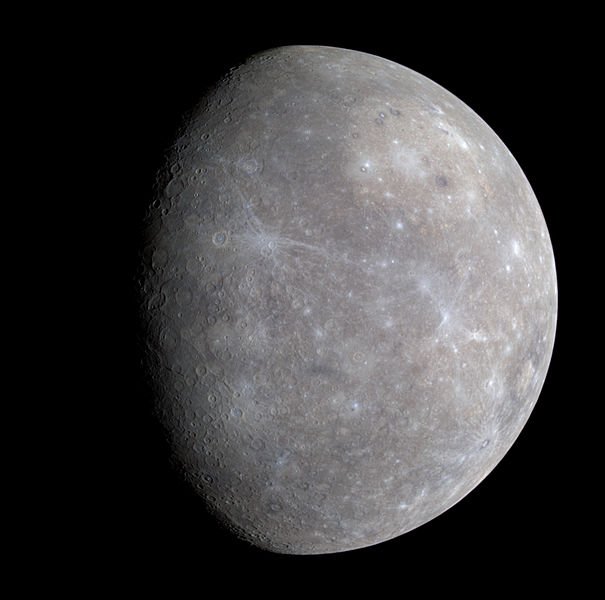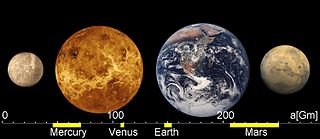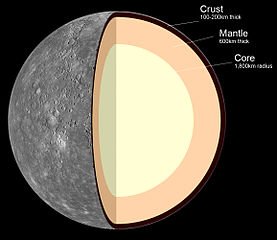Lets talk about smallest planet of solar system: Mercury..
Mercury is the innermost and smallest planet in the solar system.It orbits around the Sun from a distance of 57.91 million kilometer, with average orbital speed of 47.36 kilometer per second and takes around 87 days to complete its one rotation around the Sun(which is shortest of all planets).To rotate along its own axis, the planet takes around 58 Earth days.

The radius of mercury is about 2440 kilometer and has a mass of .gif) kilogram.
kilogram.
Like Earth, Mercury is also a rocky planet, with craters like moon and has a very thin layer of atmosphere.As the planet is very close to Sun, its temperature can reach up to 450 degree celsius during day time.At night, the temperature of Mercury falls up to -170 degree celsius, because of absence of thick layer of atmosphere which can entrap heat during night. Mercury is named after the Roman Diety mercury, a God of Roman community.
Mercury can seen near the western or eastern horizon during early evening and early morning as a bright star like object.This planet also has no moon or natural satellite, probably due to strong gravity of Sun.
Mercury as mentioned above has a very thin layer of atmosphere consists of following elements by composition by volume as oxygen(42%), sodium(29%), hydrogen (22%), helium(6%) with some other traces of elements like potassium,argon, nitrogen, krypton, neon etc...
Interior structure of Mercury includes a metallic core (1800 km thick) ,mantle (600 km thick) and crust(100-200 km thick).The core of Mercury is riched with molten iron compounds, becuase of which as iron soldifies, the volume of core reduces causing shrinkage of planet.The surface of Mercury was one time filled with volcanic activity.Mercury is second most dense material of solar system after Earth. The density of Mercury is about 5.4 gram per centimeter cube, which is slightly less than that of Earth's density which is 5.5 gram per centimeter cube. The surface of Mercury is full of craters like our moon ranges from some small diameter to kilometer across. The largest known crater is Caloris Basin, having a diameter of 1550 kilometer.
When comparing with other planets, Mercury looks very small as shown below:-

Mercury was explored by two spacecrafts known as Mariner 10 from 1974-1975 and Messenger launched in 2004 and last up to April 30,2015.Messenger spacecraft discovered water ice in the craters around north pole of Mercury, according to Scientists they may be regions which are permanently shaded from Sun.
References:-


Thanks for sharing useful info.
Thanks for your feedback, love to hear from you